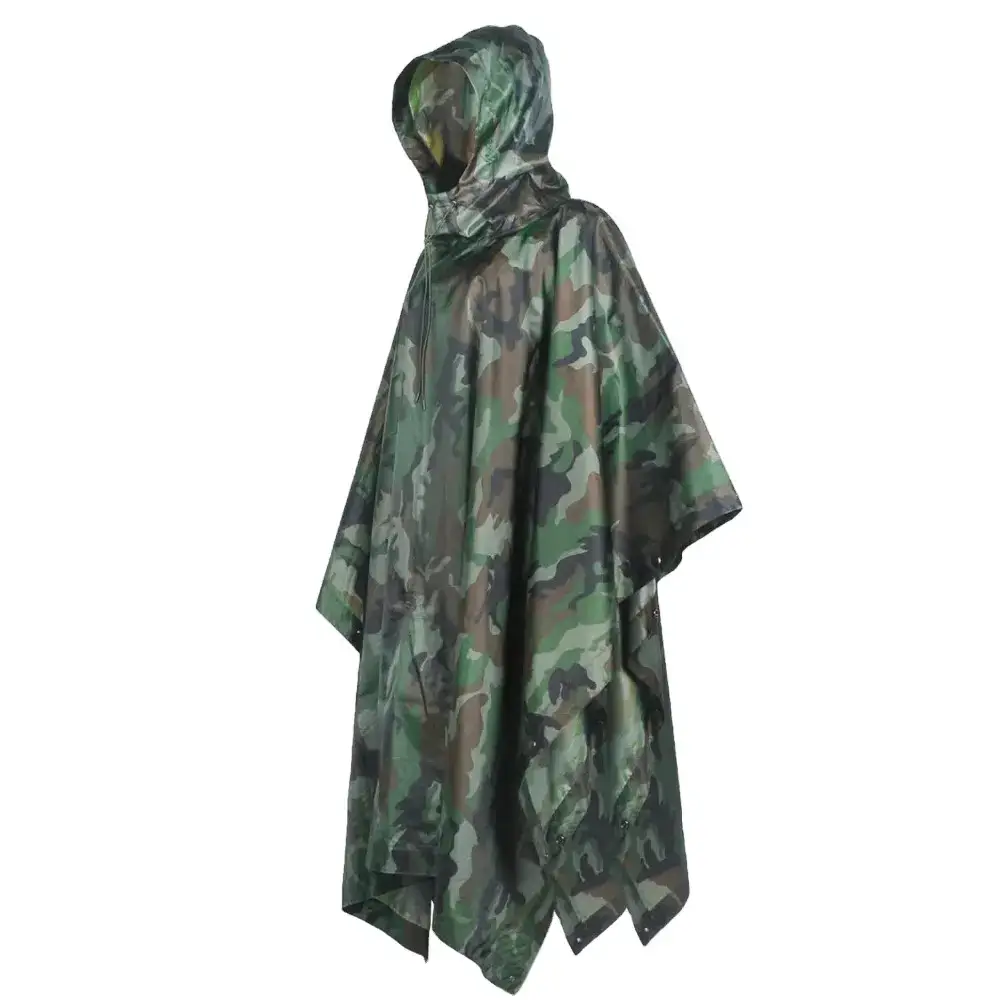Have you heard of the ghillie suit? If you’re curious about what it is and how it’s used, you’ve come to the right place.
This guide covers the essentials of ghillie suits, including their history, components, types, and practical tips for use, maintenance, and customization.
What is a Ghillie Suit?
A ghillie suit is a camouflage outfit designed to blend the wearer into their surroundings, making them nearly invisible.
The suit consists of a base layer covered in strips of burlap, jute, or other natural materials that mimic the texture and color of specific terrains, such as forests, grasslands, or deserts.
These materials can be dyed or combined with natural elements like leaves and twigs to enhance concealment.
Purpose and Uses of Ghillie Suits
The primary purpose of a ghillie suit is to provide effective camouflage in specific environments. This makes it a valuable tool in different activities:
- Hunting: Hunters use them to get closer to their prey without being detected, improving the chances of a successful hunt.
- Wildlife Photography: Photographers use these suits to capture close-up shots of animals in their natural habitat without disturbing them.
- Military Operations: Snipers, reconnaissance units, and special forces use ghillie suits to remain hidden during covert missions in diverse terrains.
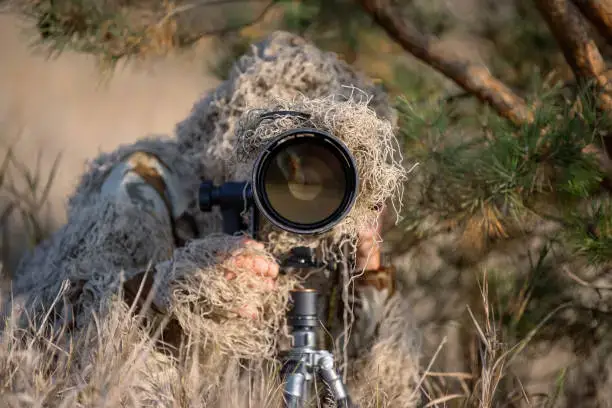
A Brief History of Ghillie Suits
The suit originated in Scotland in the 19th century, where gamekeepers, known as “ghillies,” used them to blend into the landscape while tracking poachers. These early suits were made from burlap and natural materials.
During World War I, British military forces adopted the concept, refining ghillie suits for sniper operations.
Today, ghillie suits are used worldwide by military personnel, hunters, and outdoor enthusiasts.
Learn more about their origins on Wikipedia’s Ghillie Suit page.
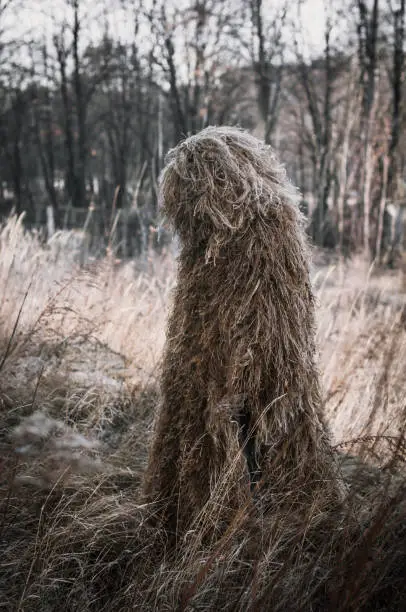
Understanding Ghillie Suits
To get the most out of a ghillie suit, understand its components, types, and what factors to consider when choosing one.
Components
- Base Layer: The foundation of the suit, usually made from lightweight, breathable material for comfort and flexibility, though some suits use heavier materials for durability in rugged conditions.
- Netting: A sturdy mesh attached to the base layer, used to hold the foliage and other materials that provide camouflage. It must withstand rough terrain without tearing.
- Foliage: Materials like jute, burlap, or synthetic fibers provide the suit’s camouflaged appearance. Synthetic options are increasingly popular for their durability and lighter weight. Some people add real leaves, twigs, and grass to match their environment better.
Types
- Commercial Ghillie Suits: Pre-made and available for purchase. They’re convenient but potentially less tailored to specific environments.
- DIY Ghillie Suits: Custom-made by users to match specific terrains, ideal for those seeking precise camouflage.
- Specialized Ghillie Suits: Designed for unique environments, such as desert, snowy, or urban settings, with materials like waterproof fabrics or modular components.
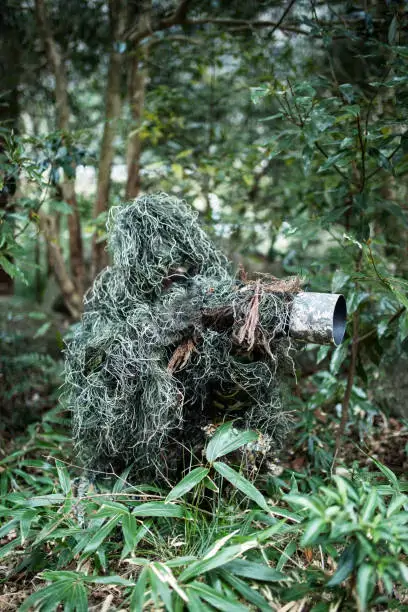
Factors to Consider When Choosing a Ghillie Suit
- Activity: The intended use of the suit will dictate its design. A suit used for hunting may require different features than one used for wildlife photography or military operations.
- Environment: The environment plays a great role in the effectiveness of the camouflage. Make sure that the suit’s foliage matches the colors and textures of the area where it will be used.
- Comfort: It should be comfortable enough to wear for extended periods. Think about things like weight, breathability, and how easy it is to move around in them.
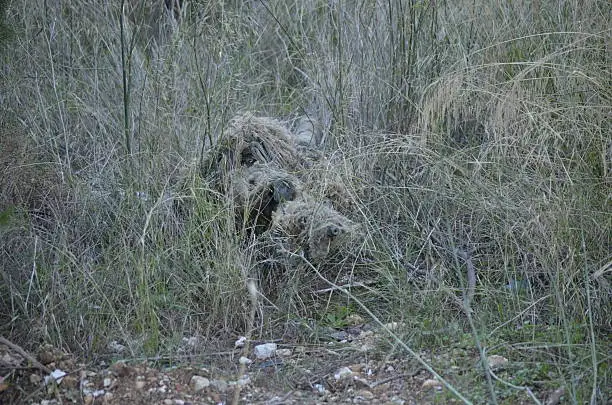
How to Wear a Ghillie Suit
Wearing a ghillie suit properly can mean the difference between being detected and staying hidden. Let’s see how to get the most out of your suit.
1. Proper Fit and Layering
Your ghillie suit should fit loosely over your clothing. This allows for movement and ensures that the added materials can effectively break up your outline.
Layering is also key. Start with moisture-wicking base layers to keep sweat off your skin. This is especially important during long periods of wear.
2. Camouflage Techniques
Your primary goal is to blend in with your surroundings. When wearing it, make sure to add natural elements like leaves, twigs, and dirt from the area you’re in. This helps to further break up your silhouette and create a seamless blend with the environment.
3. Movement and Posture Tips
Even the best camouflage can be compromised by improper movement or posture. You should move slowly and deliberately.
Avoid standing upright, as this can make you more noticeable.
Instead, crouch or crawl to stay low to the ground. It’s also important to stay mindful of your surroundings and move in harmony with natural elements like the wind or the rustling of leaves.
Ghillie Suit Maintenance and Care
Proper care extends the life of your ghillie suit. Here’s how to keep your suit in top condition.
Shake off debris after use and spot-clean with a damp cloth for light soiling. For deeper cleaning, hand-wash with cold water and mild detergent, following manufacturer instructions, as some synthetic materials may tolerate gentle machine washing.
Dry thoroughly before storing in a cool, dry place, preferably in a breathable bag, to prevent mold and mildew.
- Repairing and Maintaining Foliage:
Over time, the foliage may become worn or detached. Regularly inspect the suit for damage and replace or repair foliage as needed. Keeping a supply of extra materials on hand will make quick repairs easy.
- Extending the Lifespan of Your Suit:
Avoid exposing the suit to excessive moisture or harsh conditions when possible. Regularly check for wear and tear, and address any issues immediately.
Responsible Use of Ghillie Suits
It’s important to use ghillie suits responsibly. This means following ethical practices and respecting legal boundaries while enjoying the benefits of camouflage. These suits should only be used for their intended purposes mentioned above, not for any illegal or deceptive actions.
Always make sure that you have the permissions to use them on private or public land, and don’t trespass or disrupt wildlife.
For safety, wear a blaze orange vest in hunting areas with other people present to avoid accidents.
Partner with Us Today
With over 15 years of experience as a tactical gear manufacturer, we offer high-quality ghillie suits and other camouflage gear tailored to your needs. From custom designs to bulk orders, we ensure top performance in any environment.
Contact us at our website to explore our product range and request a quote.
FAQs
Are Ghillie Suits Legal for Hunting in My Area?
Regulations vary by region. In the U.S., check with state wildlife agencies or the U.S. Fish and Wildlife Service. Internationally, consult local hunting authorities to ensure compliance, especially on public lands.
How Do I Choose the Right Ghillie Suit for My Terrain?
Select a suit with colors and textures matching your environment (e.g., green jute for woodlands, tan synthetics for deserts). Test the suit in the field and add local vegetation for better blending. Our team can customize suits for specific terrains.
Ghillie suit vs. poncho, what’s the difference?
Ghillie suits can resemble ponchos in some ways, but they are far more complex and functional. Here’s a comparison:
| Feature | Ghillie Suit | Poncho |
| Shape | Loose, full-body covering with strands | Simple, rectangular or circular design |
| Purpose | Camouflage and concealment | Weather protection, basic concealment |
| Material | Jute, burlap, or synthetic strands | Waterproof or lightweight fabric |
| Coverage | Covers the entire body, including the head and arms | Primarily torso, sometimes with a hood |
| Design | 3D texture for blending into specific surroundings | Flat, often with minimal patterns |
Some Ghillie suits may have a poncho-like base layer, but the addition of strands and textures sets them apart.
